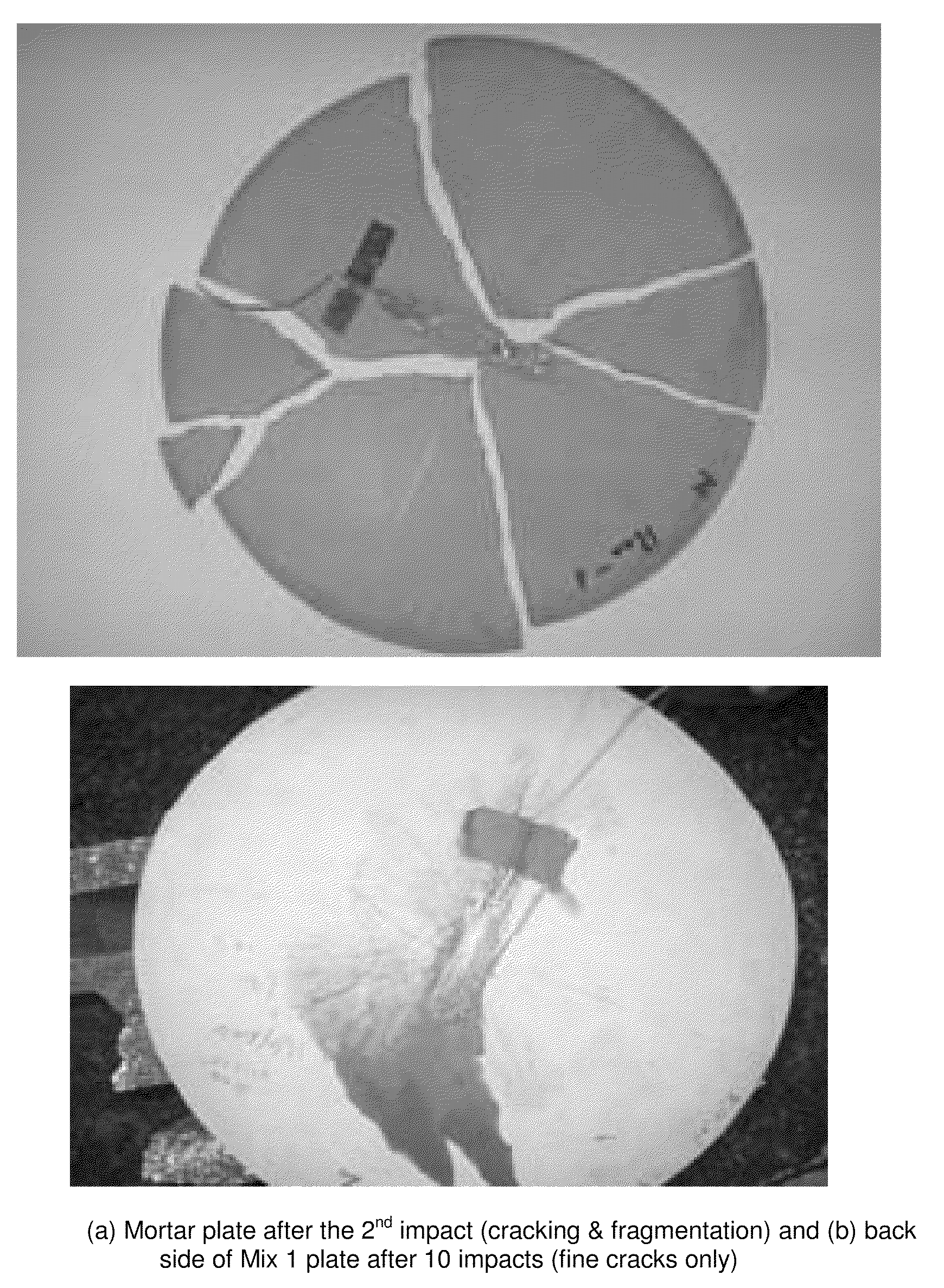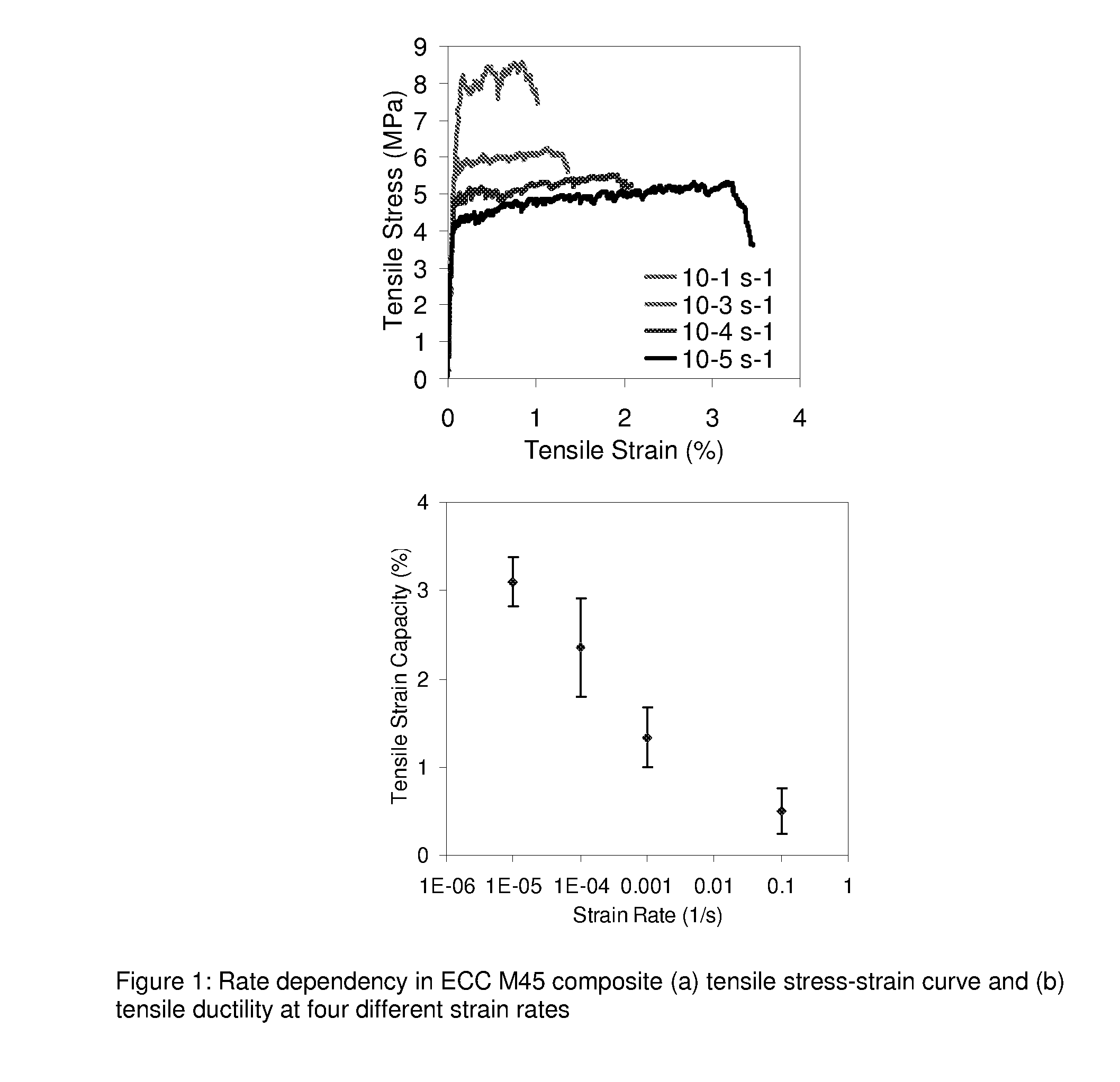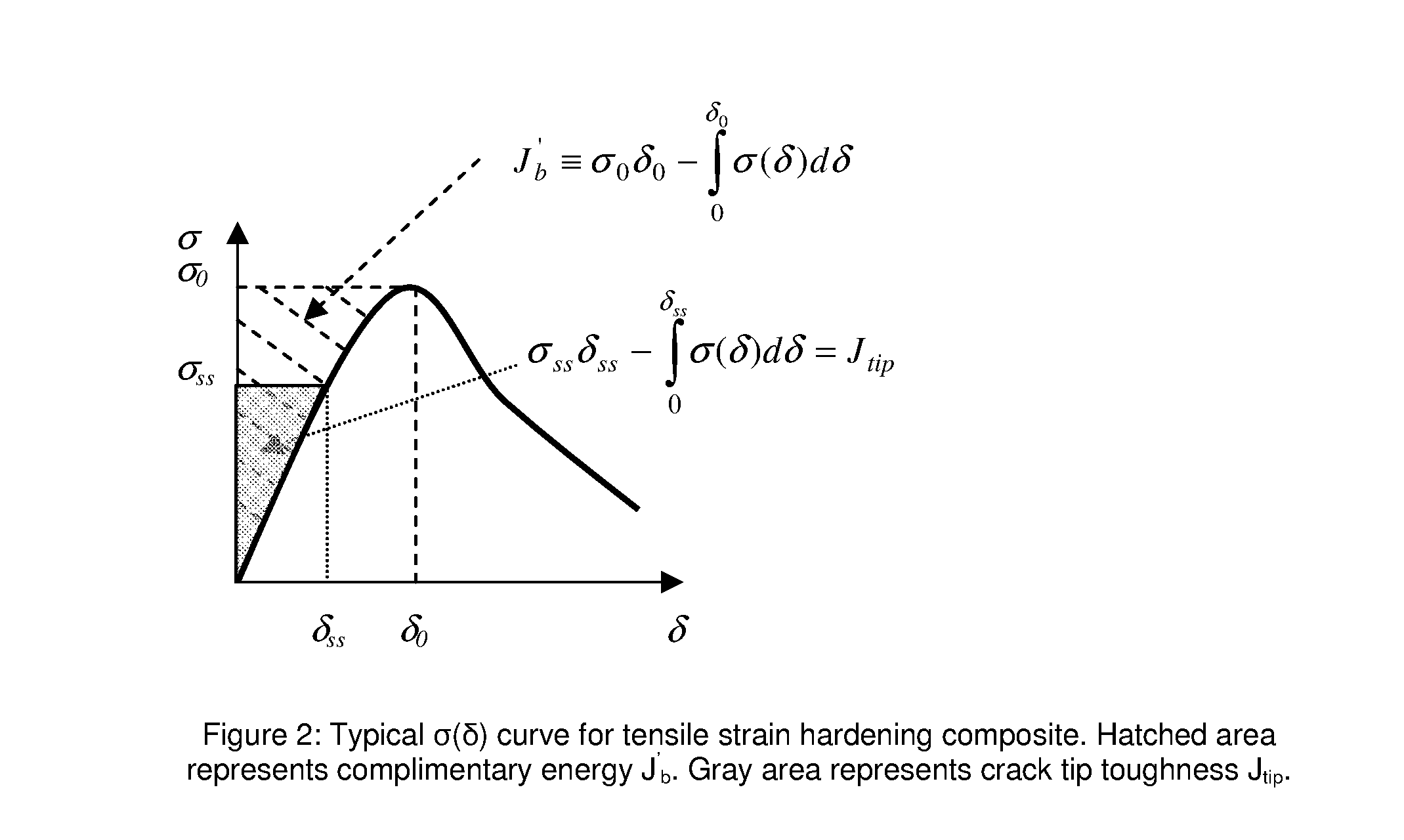Impact resistant strain hardening brittle matrix composite for protective structures
a brittle matrix and composite material technology, applied in the field of impact resistance strain hardening brittle matrix composites, can solve the problems of brittleness of concrete material in tension, the vulnerability of reinforced concrete structure when subjected to bomb blasts, and the vulnerability of reinforced concrete structure when subjected to severe dynamic loading, so as to improve the tensile strain capacity, suppress localized brittle fracture, and facilitate flowability
- Summary
- Abstract
- Description
- Claims
- Application Information
AI Technical Summary
Benefits of technology
Problems solved by technology
Method used
Image
Examples
examples
[0048]The exemplary mixes here below for preparing ductile fiber reinforced brittle matrix composite comprises cement, fine aggregates, pozzolanic admixtures, lightweight fillers, water, water reducing agent, and discontinuous short fibers. The mix proportions are tabulated in Table 1. The cement used is Type I Portland cement from Holcim Cement Co., MI, USA. The water reducing agent used is superplasticizer available as ADVA Cast 530 from W. R. Grace & Co., IL, USA. Two types of discontinuous polymer fibers, K-II REC™ polyvinyl alcohol (PVA) fiber through Kuraray Co. Ltd of Osaka, Japan, and Spectra 900 high strength high modulus polyethylene (PE) fiber through Honeywell Inc., USA, are used at 2% volume fraction. The properties of the PVA and PE fibers can be found in Table 2. Pozzolanic admixture used is a low calcium Class F fly ash from Boral, Tex., USA. Two types of fine aggregate, silica sand and recycled corbitz sand, are used. The silica sand with a size distribution from 50...
PUM
| Property | Measurement | Unit |
|---|---|---|
| Size distribution | aaaaa | aaaaa |
| Size distribution | aaaaa | aaaaa |
| Fraction | aaaaa | aaaaa |
Abstract
Description
Claims
Application Information
 Login to View More
Login to View More - R&D
- Intellectual Property
- Life Sciences
- Materials
- Tech Scout
- Unparalleled Data Quality
- Higher Quality Content
- 60% Fewer Hallucinations
Browse by: Latest US Patents, China's latest patents, Technical Efficacy Thesaurus, Application Domain, Technology Topic, Popular Technical Reports.
© 2025 PatSnap. All rights reserved.Legal|Privacy policy|Modern Slavery Act Transparency Statement|Sitemap|About US| Contact US: help@patsnap.com



